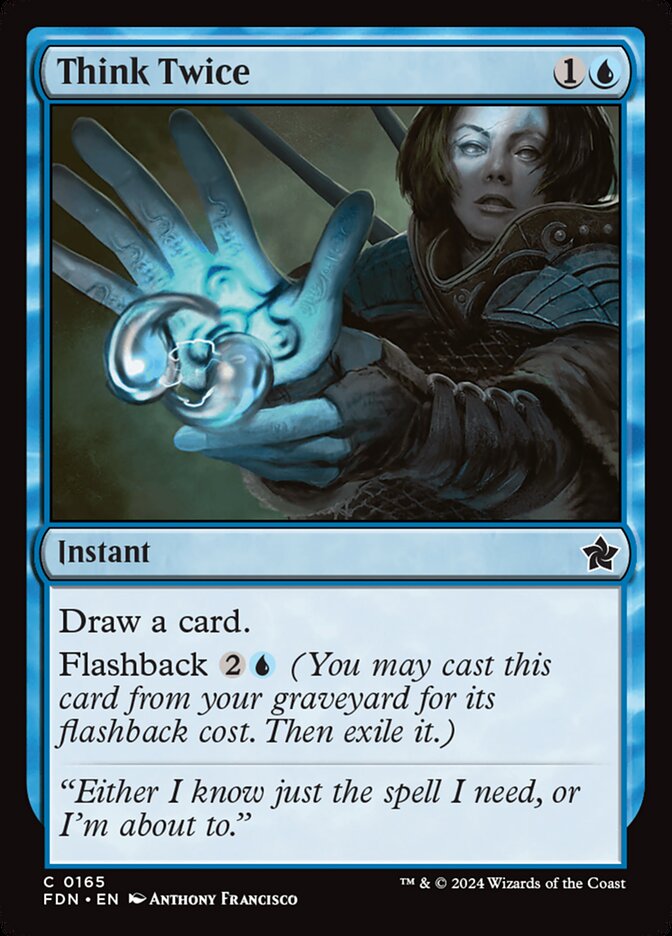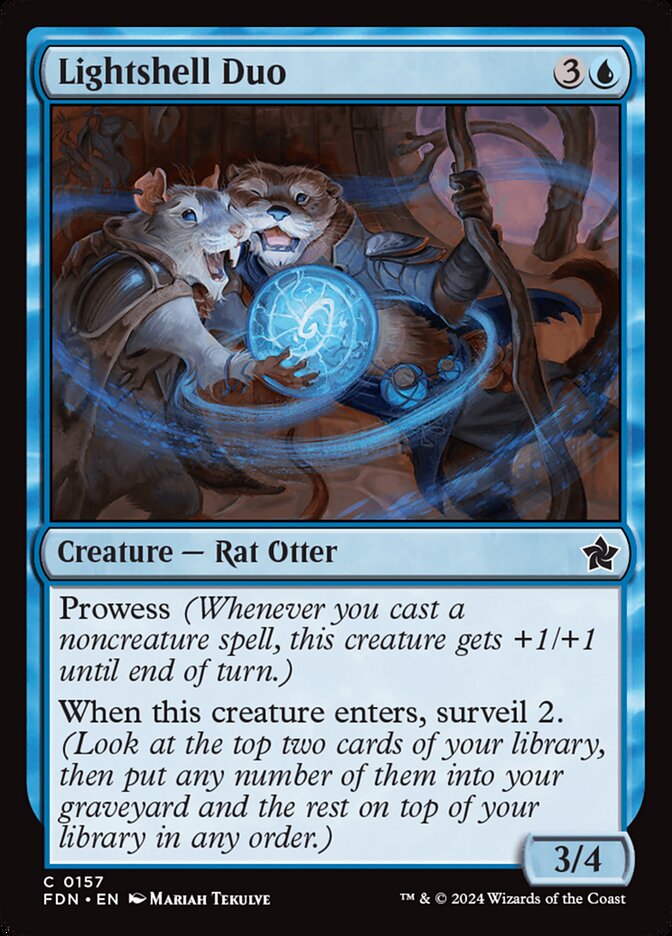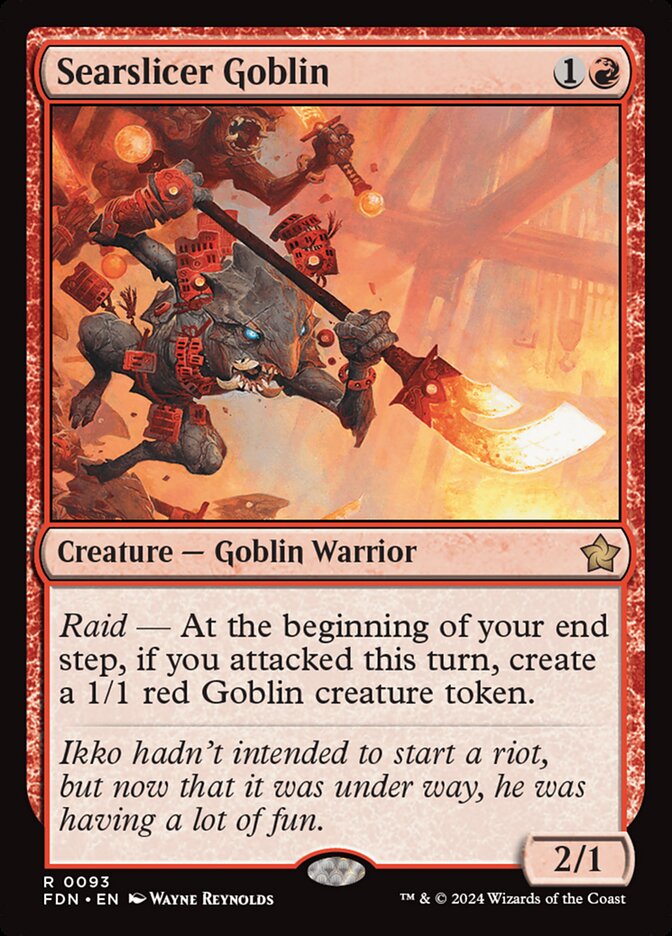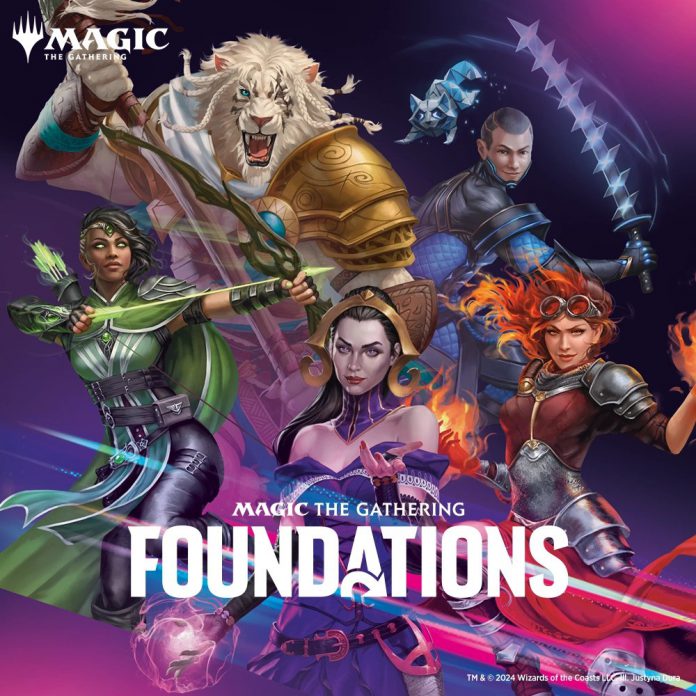After many years, a Core set has returned to Magic. This Standard legal set is 50/50 new cards and reprints, and will remain legal through at least 2029 with annual reprints. A pared down selection of cards will be available in a Starter Collection and Beginner Box aimed at new players, with boosters for the more enfranchised crowd. There is no overarching story, though there will be a planeswalker and legendary creature in each color to serve as its face. A returning set means returning mechanics, as well as a tweak to how combat damage is assigned.
Foundations will release to MTG Arena on November 12th, 2024, and to the tabletop on November 15th.

Flashback
Marcy: The biggest thing about Foundations is that this seems like a point WotC hopes new players will be able to start from; those of us old enough to remember core sets know that’s not always exactly how this works, but the fact that this Foundation set will remain Standard legal for so long is the thing that will be very impactful; Flashback, for example, provides a lot of strong utility for many color and deck archetypes, and is a mechanic current Standard lacks. I think the most important thing of note is most of these mechanics aren’t “new”, but instead “returning”, and thus the fact that there are a lot of reprints and new cards mixed in makes sense. Standard players getting a strong base to work from is a great sign, hopefully.
BPhillipYork: Wow flashback is one of the most common mechanics that we’ve seen is deciduous over the years. Flashback is not a particularly flashy mechanic, it’s basically just pure, built in value. You get to play the card twice. This can be further leveraged by things like card selection cards, mill, and more esoteric ways of discarding cards for value like spellshapers. In Commander it’s got a lot impact because Wheels are pretty ubiquitous, even overplayed by decks that don’t really need them. Seeing this as a mechanic isn’t surprising at all, what’s possible is to see it expanded in some way in the color wheel, moving into white and green.
TheChirurgeon: On top of everything said so far, Flashback is also super easy to understand; players can easily grok what’s going on with it, see the value it brings – a second cast is always good – and there isn’t a ton of associated rules baggage. It’s the kind of mechanic new players can easily enjoy and older players love because it’s just always great.

Threshold
Marcy: Threshold’s going to see a lot of immediate use with some current deck brews that are already in Standard, and is going to make self-mill even more lucrative than it already has been lately. I really like Threshold, Flashback, and similar style mechanics that make using the Graveyard–or seeing the Graveyard as a resource–one of the better aspects of expanding Magic deck building ideas. Also, a pretty simple one: Just know the amount of cards in your Graveyard.
BPhillipYork: Well Threshhold goes well with Flashback, because it further incentivizes filling your yard. It also plays really well with Wheels, rummage draw, as well as fetchlands, which both allow you to fix and fill your yard. Since so many players run wheels and wraths in Commander, you can assume you’ll be able to rely on it even if you don’t in particular run cards to fill up your yard.
TheChirurgeon: Threshold was a mechanic I was legitimately not expecting to see. While yes it does work well with Flashback in theory, it does require a bit more careful management, as casting cards out of your yard with Flashback will remove them, and potentially drop you out of Threshold. That can be a lot for newer players to track but generally Threshold is a mechanic that becomes relevant in any longer game and realy shines with good graveyard-filling cards.
That said, seeing these two mechanics together really indicates that Foundations is a bit of a graveyard set, right?

Prowess
Marcy: Prowess has been around in Standard and is STILL around in Standard so this is maybe the least “new” Foundation mechanic, but seeing it in the set means that WotC sees it as a very fun/impactful mechanic that you may want to build around, and I somewhat agree (even if the last year and change of Standard has been dominated by top-heavy Prowess decks over performing). Prowess has a lot of interesting scaling possibilities, and can provide interesting Stack interactions; for example, targeting a creature with removal that focuses on Toughness can suddenly get fizzled simply by casting any sort of instant spell from your hand and growing your Prowess monster out of range.
BPhillipYork: Prowess is really a tempo kind of mechanic, pumping your creatures automatically as you play cards leverages playing cheaper spells more frequently, the risk is that you’ll run out of cards burning through your hand pumping your creatures, and not be able to finish your opponent. Prowess is balanced around your opponent having 20 life, in Commander your opponents effectively have 6 times that much in a typical pod, 120, so prowess is relatively less valuable. It’s far harder to tempo out 3 people with twice as much life as normal. The biggest use of it is likely to be pumping up commanders, or decks that amass a massive storm count and finish everyone off at once. Where it really shows up is randomly on cards that are being played for other reason, or somewhat rarely, in Boros decks, particularly with Feather, the Redeemed, or one-punch decks.
TheChirurgeon: Prowess is such an interesting mechanic, not so much because of its play pattern but because of its history – it was initially considered too powerful a mechanic and Wizards looked to replace it. Aven Wind Mage was one of the early attempts at this, trying to refocus more on instants and sorceries as Prowess was dropped from evergreen to deciduous as a mechanic. The big issue is that it tends to interfere with other themes – Prowess is very good in enchantment and artifact sets, and can create issues if you’re putting it in on creatures in those sets. That’s a shame, because Prowess is a fantastic blue/red mechanic and it took them a surprisingly long time to actually come up with it. Since then they’ve struggled to replace it, so much so that it isn’t a surprise to see it back again. It’s not great in Commander, but it’s a powerful constructed mechanic for tempo decks to build around and while the sweet spot is the mythical 1-drop red prowess creature like Monastery Swiftspear, there’s plenty of other room for good creatures. Prowess combos very well with Flashback mechanically.

Raid
Marcy: Hailing from Khans block, Raid hasn’t been around for… a long time? I can’t even really recall if it showed up after Khans. This is a cool little mechanic that helps decks that focus on attacking–particularly with tokens or small creatures–in the game, as you are rewarded for actually attacking, instead of being forced to sit on your hands. It also helps keep the board growing, making your deck and go-wide strategies a threat.
BPhillipYork: So, like prowl, except broader. Raid is a great mechanic to have built in to Commander because many games turn into useless standoffs where people don’t want to attack. Giving players an incentive to attack is good so they don’t post up for no reason “to block” and the game never advances.
TheChirurgeon: Raid is just a solid mechanic to build into a set since you generally want to encourage breaking stalemates. On the table it tends to favor more aggressive decks, or decks with unblockable creatures where you can attack without fear of losing something.
Removing Combat Damage Order
Rather than the current system where the attacker decides the order blocking creatures will be assigned damage in a separate step, allowing for a surprise pump spell to save both creatures, there is no longer an assignment step. The defender now has the choice to use the pump spell after blockers have been declared, and then the attacker can split the damage however they like between the blockers.
Marcy: I find this change really interesting. It is going to make spreading damage a much more important thing to consider when a player blocks, and also means blocking creatures with Deathtouch might become a very poor investment (more than it sometimes can be). I do like that the change helps attacking, because there are many times in Magic: the Gathering where attacking, unless you are guaranteed to get the result you want exactly, is often just not worth it, and can make the game into a stall fest.
BPhillipYork: This is a good change because it will lead to more combats. It makes combat more favor the attacker, allows them to split up deathtouch damage among several blockers, and just generally gets the game moving. Anything that moves the benefit and control more from defending to attacking will hopefully make the game more dynamic and give players more incentive to act, rather than sit passively developing a ludicrous board state.
TheChirurgeon: Yeah combat was a bit too lopsided for the defender. It’s a good change.
Next Time: The Set’s White, Blue, and Black Cards
That wraps up our look at the mechanics of Foundations. We’ll be back later to look at the most noteworthy cards in the set!
Have any questions or feedback? Drop us a note in the comments below or email us at contact@goonhammer.com. Want articles like this linked in your inbox every Monday morning? Sign up for our newsletter. And don’t forget that you can support us on Patreon for backer rewards like early video content, Administratum access, an ad-free experience on our website, and more.


